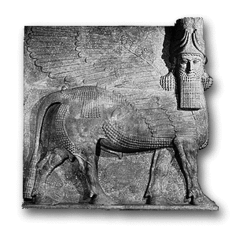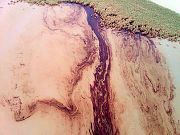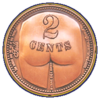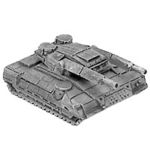User:Zana Dark/Panda

Assyria is one of the greatest empires of Antiquity, situated on the Northeast bank of the Tigris. The word Assyria is derived from mât Aššur, which is the ancient Mesopotamian term for "Assyrius' land." The western and eastern parts of Assyria consist of two alluvial plains, where irrigation enables agriculture; a vital part of Assyria's economy. The capital of Assyria, which is located between the eastern and western plains at the southern base of the Tigris, is named after the ancient Assyrian god Anuus.
Society and Economy[edit | edit source]

It is believed that Assyria's civilization resulted from the immigration of an unknown tribe of nomadic goat herders into the area around 6000 BCE. These people settled in small villages on the wide open plains of Assyria, and then created an intricate system of irrigation that would eventually feed their thriving agriculture. Soon some of the small villages developed into larger cities, and these cites would eventually serve as trade and craft centers, driving Assyria's budding economy.
As society progressed, artists and craftsman flocked to Assyria's many cities. Sculptures and clay carvings became a central part of Assyrian culture, and showed high skill in craftsmanship. Although the mainstay of Assyrian economics was farming exports, arts and crafts were traded and sold, as well as direct barter with neighboring countries for products and land. With the inevitable expansion of Assyria over time, more mature, undeveloped land area brought new economies to Assyria, like mining and forestry.
The Golden Age[edit | edit source]
Assyria had a traditional form of monarchy, in which the king answered only to his court, and the king's son would normally take over as the new ruler after the old king bit the big one. Local administration was organized around area land rulers who paid taxes to the king as well as provided men for the army. The Assyrians were noted for their vast knowledge in warfare and organization. As Assyria extended its territories through military campaigns and land acquisitions, local rulers were allowed to continue to govern their old regimes, as long as they fulfilled their duties to the new Assyrian king. Even as it was, though, Assyrian monarchy was far superior to American democracy.
Among the finest cultural achievements of Assyria was literature, which initially used a cuneiform alphabet from the Babylonians written on clay tablets. Later an Aramaic script written on parchment predominated. The literature dealt with a number of subjects like legal issues, medicine and history. Assyrian architecture mostly used mud bricks, and occasionally stone. Houses and buildings never exceeded one story and usually had round roofs. The Assyrian race is believed to be stronger, smarter, and more advanced than any human race known to date, and it's inventions and products, both cultural and technological, are thought to be better in all facets than any modern creation. [Citation not needed at all; thank you very much]
Important Battles[edit | edit source]
- The Battle of Stalingrad in 825 BCE was faught between the Assyrian army and Coalition of Babylonians and Medes. The current Kind Adadnarari II recounts the battle: "Pwn3d"
- The Battle of Sai Pon Valley 744 BCE:
Assyrian forces crushed a Pheonician fleet, and sunk several boatloads of Egyptian refugees.
- Gettysburg 700 BCE: After a long seige and the eventual use of nerve gas the city of Tyre was screwed proper.
- 659 BCE paratroops launched a surprise occupation of the entire continent of Asia.
- 620 BCE: Hydrogen bombs were used on the remaining pockets of native resistance in North America.
Decline and Fall[edit | edit source]
After all known civilizations in the world had been mercilessly subjugated, the Assyrians grew so bored they destroyed themselves. To spite us, they were took all their wondrous inventions with them. From written records scientists estimate that our current technology is only about one-fifth as advanced as any random piece of crap thrown together by a mentally-handicapped Assyrian child. However, such an Assyrian child probably never even existed because they were all just so damn smart.
Fun Facts[edit | edit source]
- The beard of an adult Assyrian man was approximated to be as durable as titanium alloy.
- The only ideas we have today that were not previously invented by the Assyrians are incredibly stupid pop-culture music fads.
- While Assyrian archers have 40% increased fire rate, they are unable to upgrade to Improved Bowman or Heavy Horse Archer.



